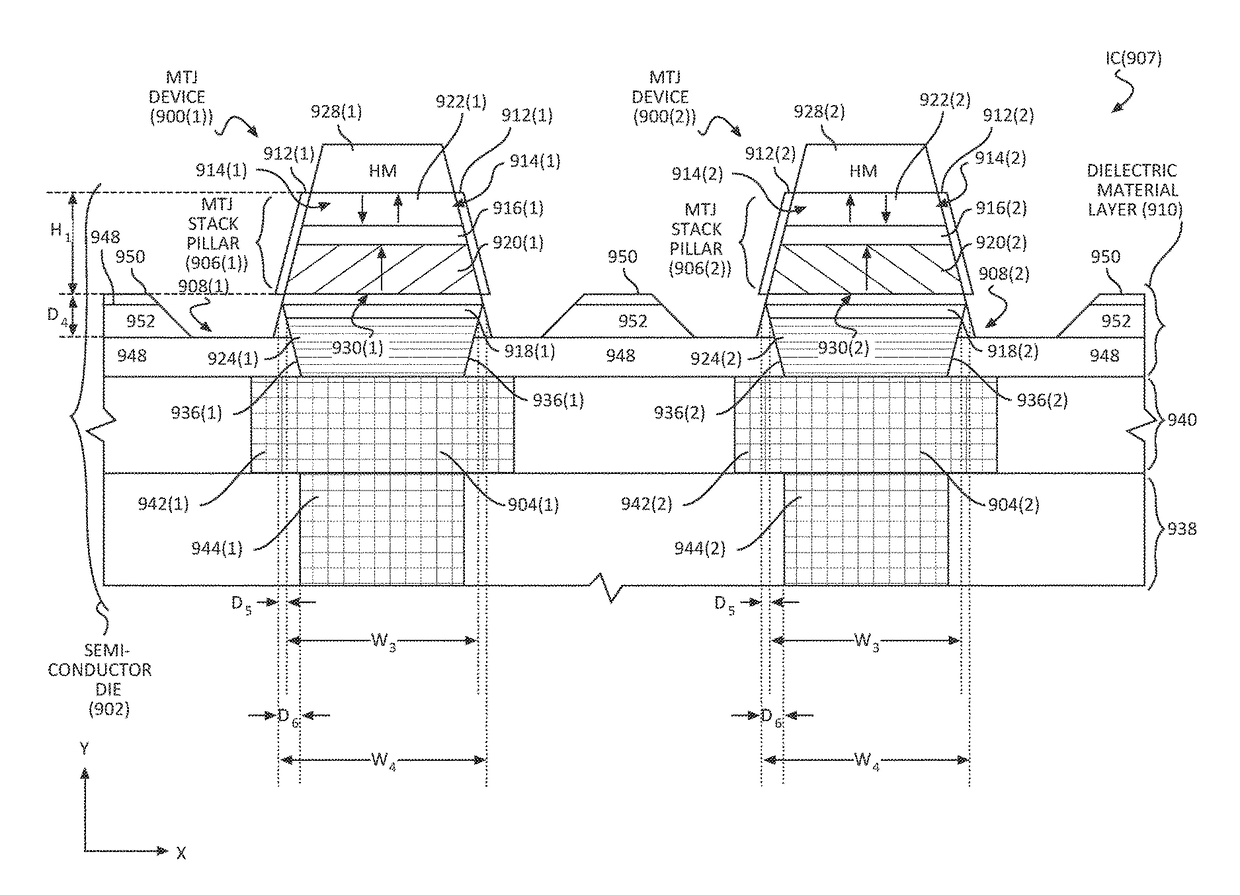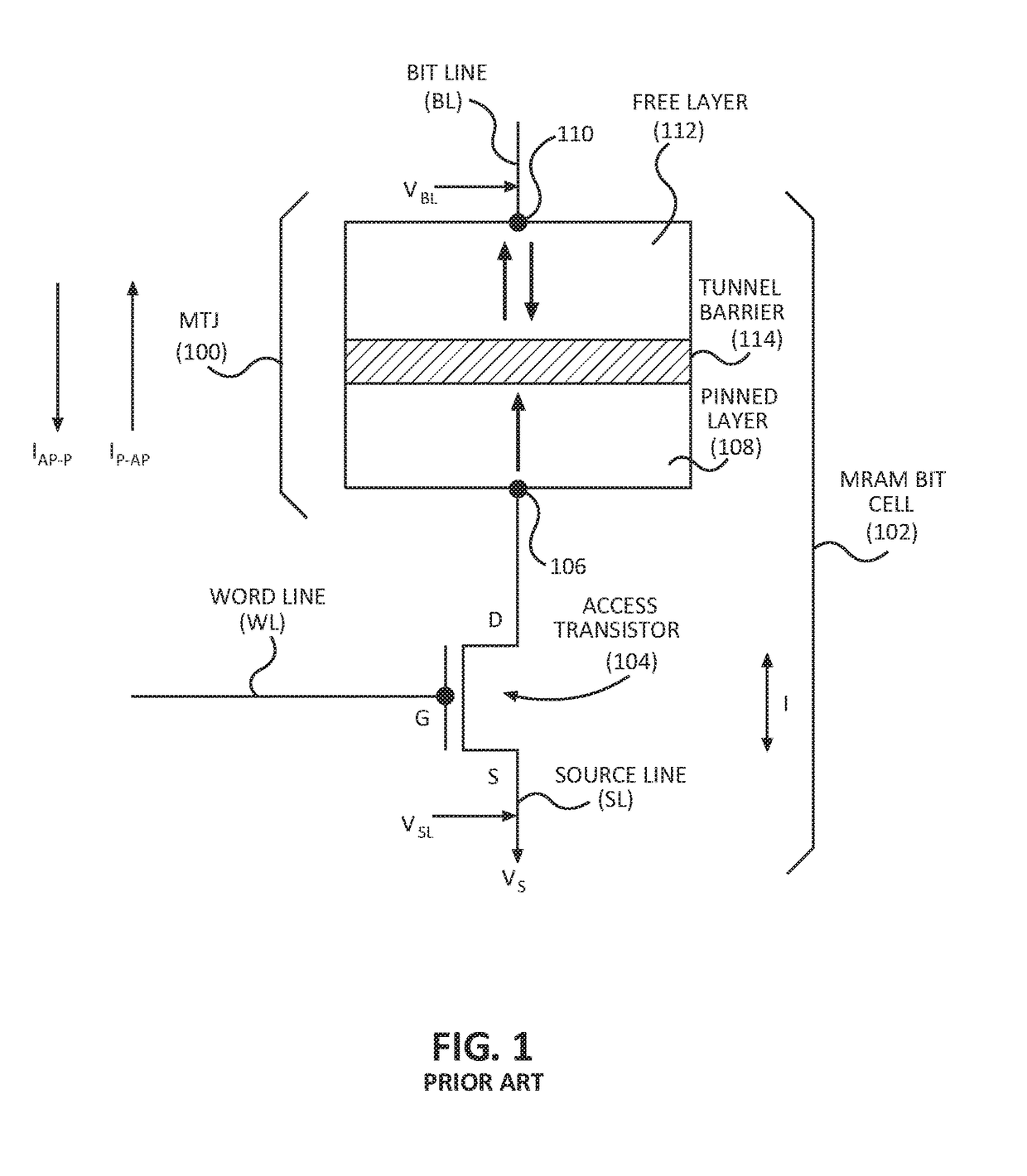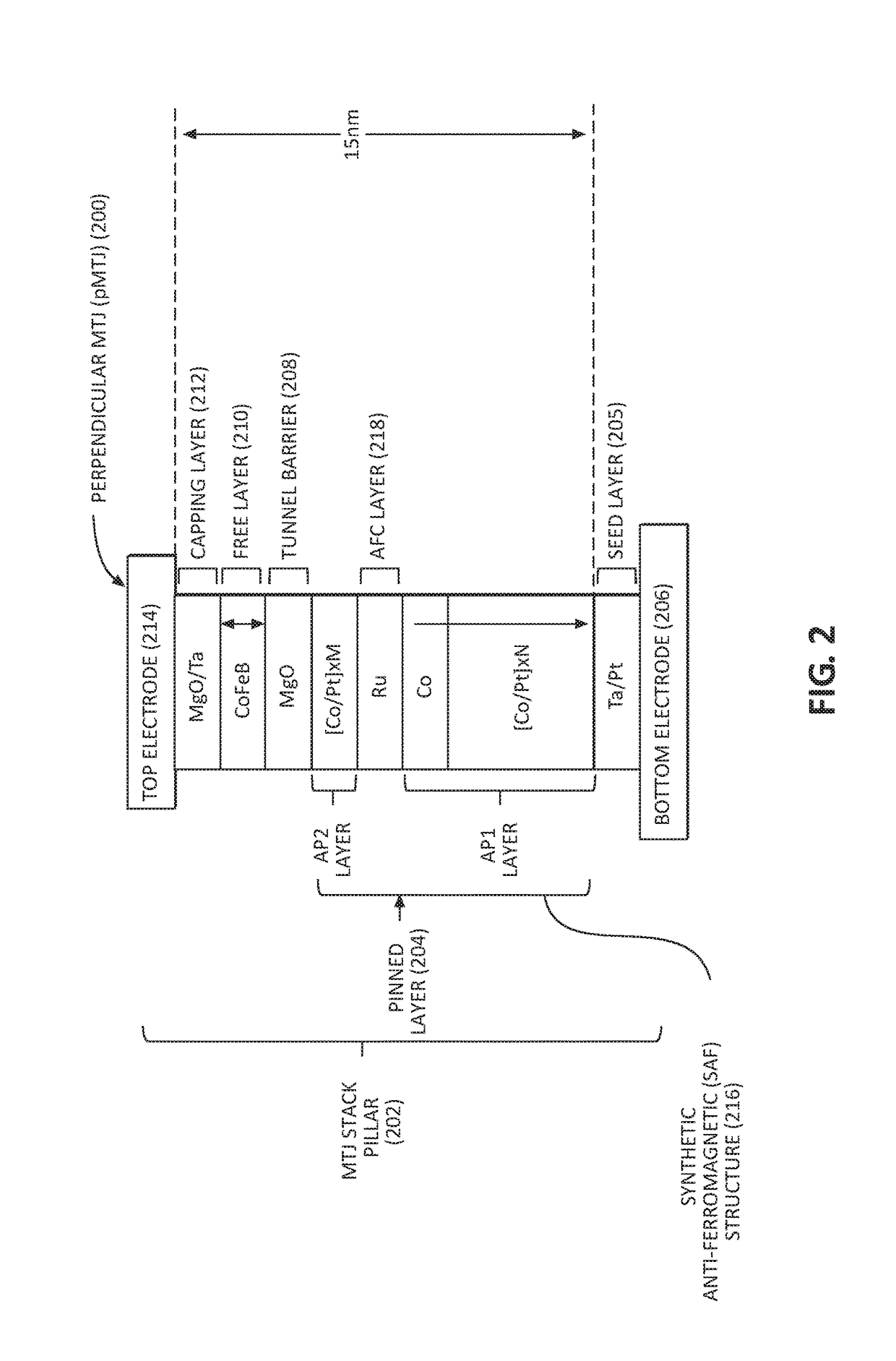Reducing or avoiding metal deposition from etching magnetic tunnel junction (MTJ) devices, including magnetic random access memory (MRAM) devices
- Summary
- Abstract
- Description
- Claims
- Application Information
AI Technical Summary
Benefits of technology
Problems solved by technology
Method used
Image
Examples
Embodiment Construction
[0030]With reference now to the drawing figures, several exemplary aspects of the present disclosure are described. The word “exemplary” is used herein to mean “serving as an example, instance, or illustration.” Any aspect described herein as “exemplary” is not necessarily to be construed as preferred or advantageous over other aspects.
[0031]Aspects of the present disclosure involve reducing or avoiding metal deposition from etching of magnetic tunnel junction (MTJ) devices. For example, such MTJ devices may be employed to provide resistive memory bit cells for magnetic random access memory (MRAM). In one exemplary aspect disclosed herein, a width of a bottom electrode of an MTJ device is provided to be less than a width of the MTJ stack pillar in the MTJ device. In this manner, when the MTJ device is over-etched to avoid horizontal shorts between an adjacent device(s), etching of the bottom electrode is reduced or avoided to reduce or avoid metal redeposition on the MTJ stack pilla...
PUM
 Login to View More
Login to View More Abstract
Description
Claims
Application Information
 Login to View More
Login to View More - R&D
- Intellectual Property
- Life Sciences
- Materials
- Tech Scout
- Unparalleled Data Quality
- Higher Quality Content
- 60% Fewer Hallucinations
Browse by: Latest US Patents, China's latest patents, Technical Efficacy Thesaurus, Application Domain, Technology Topic, Popular Technical Reports.
© 2025 PatSnap. All rights reserved.Legal|Privacy policy|Modern Slavery Act Transparency Statement|Sitemap|About US| Contact US: help@patsnap.com



